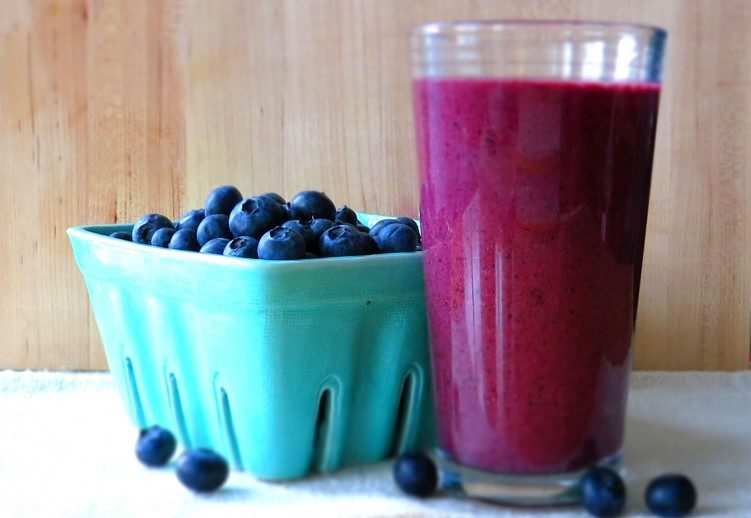How to grow blueberries
Follow our guide to growing the best fruit trees in the neighbourhood! Get professional tips and tricks on all things fruit trees.
Pies, smoothies, muesli; blueberries are the perfect addition to so many delicious recipes, but they’re not the most affordable! While picking up a punnet at the shops might not always be an option, growing blueberries in your garden is a great way to get your fix without the price tag. Here’s how to grow blueberries in your garden.
Where is the best place to plant blueberries?
For best results, select a site for your blueberry plants that has full sun most of the day. For climates with high summer temperatures with multiple days over 38°C keeping the plants watered well and hydrated will help the plant withstand these hot temperatures.
For best results PlantNet recommends that blueberries be grown in a pot or tub (50 cm minimum diameter) as this gives you more control over the pH, and provides good drainage to help control potential root disease often found in garden soil. Don’t use black coloured pots as these heat up in the sun which will be detrimental to the plants root system.
How to plant blueberry plants
Remove the blueberry plant from the original pot you purchased it in within two weeks from purchase. For the most optimum potting mix for your blueberry, combine 50% coarse pine bark (20 – 25mm in size) with 50% of a premium quality Camellia/Azalea potting mix. This provides a well aerated potting mix which will extend the life of your blueberry in a pot considerably. A 5- 10 mm layer of fine gravel added to the bottom of the pot to assist with drainage is a good idea. Do not tease the roots of the plant before planting as this will severely affect the plants establishment. When transferring your newly purchased blueberry into a larger pot ensure the top of the potting mix remains at the level it was at in the pot you are moving it from. Add a layer of pine bark to the top of the pot to protect the surface roots and minimise moisture loss from the potting mix.
Why blueberries need premium potting mix
Premium potting mixes are the first choice when you want the very best for your plants. They have a greater water-holding capacity, contain added nitrogen and other plant nutrients, and remain at peak performance for longer than cheaper alternatives. They are a worthwhile investment, especially for those superior plants you need to keep looking spectacular as decorative and fruiting specimens. Premium potting mixes are marked on the bag by Red Standards Marks ‘ticks’
While blueberries require a pH of 5.0 – 5.5, most Camellia/Azalea potting mixes are already in this range; however, it is a good idea to check it anyway. A pH soil test kit purchased from your nearest garden centre or hardware store is easy to use and is ideal for checking soil pH over your entire garden area. Add a good quality 3-month slow-release fertiliser to your potting mix and mix in well if it is not included in the potting mix purchased. PlantNet recommends these potting mixes above to help keep the pH low/acid and to provide a well-drained and open potting mix for good blueberry root development. Blueberries produce masses of fine roots which mat together when growing well. Without a well-aerated potting mix (using pine bark), all blueberry varieties may only have a life of around 2 years in pots. This premium potting mix and pine bark combination should extend the plant’s life. In most cases, the life span would be 6-8 years.
Fertilising blueberries
One common error when planting out new Blueberries is adding fertiliser straight away. It is highly recommended that you do not fertilise your new Blueberries or put fertiliser in the hole around the root zone as it can burn the roots. This goes for some organic fertilisers also. Wait 2- 3 weeks before fertilising after planting. The pH should be maintained between 5.0-5.5. Note: All fertiliser products will have a nutrient analysis on the back of the bag which shows percentages of nutrients. It is important to read this information before purchasing fertiliser of any type.
Fertilisers should be applied evenly accross the top of the pot or root zone.
For a great guide on fertilising Blueberries in pots in the home garden based on trial work completed by PlantNet over 3 years.
Watering blueberries
As the potting mix is free draining, in warm weather plants should be watered every 2 days or more frequently if required until water just drains out of the pot base. In hot summers large established plants will require watering every day. (Keeping the plants watered well will help the plant withstand hot temperatures) Do not over water in cooler conditions!
Avoid watering plants over their foliage as this will help promote conditions for fungal leaf diseases (foliar fertilising while the flowers and fruit are present is the only exception).
Common blueberry pests and diseases
All blueberry varieties are susceptible to fungal leaf diseases (particularly blueberry rust) under high humidity and high rainfall. Apply a good fungicide for protection. We recommend Copper Hydroxide (product names include Kocide or Blueshield). Do not wait for leaf damage to occur before spraying, as protection is better than cure. Monitor for scale insects (the first sign is ants on the bush as they foster scales). Pour a small amount of soapy water onto the affected area and control ants. Check for caterpillar damage regularly and control it when necessary. Queensland Fruit Fly can also be a problem in warmer Spring/Summer climates of QLD and NSW.
Birds and flying foxes: Cover the plants with netting as soon as young berries appear on the bush.
Blueberry Burst and Blueberry Kisses are evergreen blueberry varieties. A good, strong, healthy plant with foliage free from disease is very important in achieving beautiful large fruit. Do not allow plants to lose their leaves from poor nutrition or disease.
Following the directions above, you will have a delicious supply of healthy blueberries.
How to prune a blueberry bush
Blueberry Kisses has a different growth habit to Blueberry Burst from the beginning and the bush is not as compact as Blueberry Burst in the first year. If Blueberry Kisses sends a shoot up one side of the the plant which potentially looks like it will overtake the bush in the first year this shoot should be pruned back level with the rest of the bush. This will make the bush more compact.
Blueberry Burst and Blueberry Kisses pruning can begin at the end of the first 12 months if plants have established well, as soon as fruiting is finished for the season. Generally, all of the old spent fruiting wood is removed which on average will reduce the plant size each year by about 50% and then the plant will re-establish through the growing season. Please follow the video guides below.
Read more:








